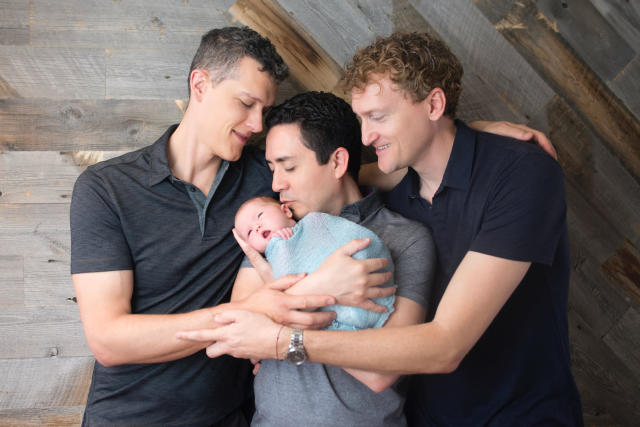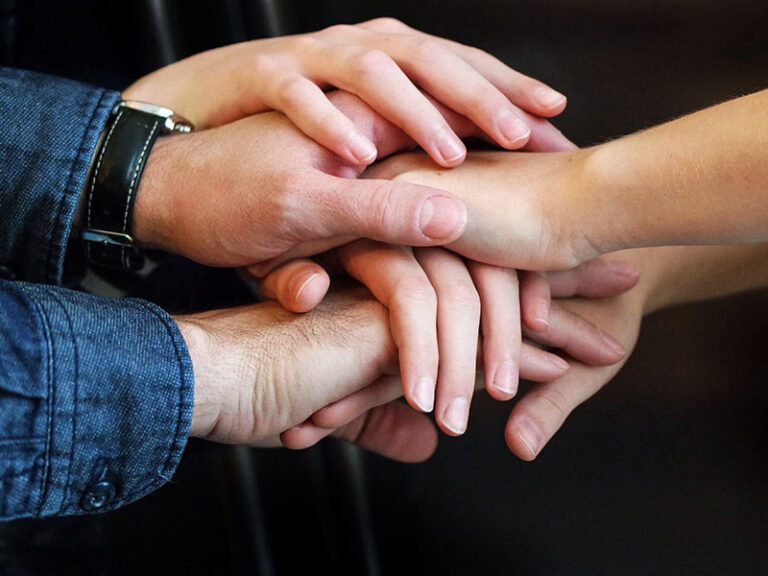Getting Off the Relationship Escalator: Navigating Non-Escalator Relationships
In a world where traditional relationship trajectories often follow a predictable path, commonly referred to as the ‘relationship escalator,’ there exists a realm of connections that defy these norms. Non-escalator relationships, which include polyamorous and other non-monogamous arrangements, present unique dynamics that require a different approach to communication, personal growth, and societal interaction. This article delves into the intricacies of non-escalator relationships, offering insights and strategies for those navigating these less conventional romantic terrains.
Key Takeaways
- Non-escalator relationships reject the traditional progression of intimacy and commitment, offering alternative models of connection.
- Polyamory and relationship anarchy are two examples of non-escalator relationships, each with distinct principles and practices.
- Effective communication, including nonviolent communication (NVC), is crucial for expressing needs and setting boundaries in non-escalator relationships.
- Individuals in non-escalator relationships often engage in a journey of self-discovery, emphasizing the importance of self-reflection and support networks.
- Non-escalator relationships challenge societal norms and expectations, pushing for greater inclusivity and diversity in the understanding of romantic partnerships.
Understanding Non-Escalator Relationships

Defining the Relationship Escalator
The concept of the relationship escalator refers to the traditional progression of intimate relationships, which is often likened to an escalator due to its sequential and upward nature. This metaphorical escalator represents the societal expectations that relationships should follow a set path: dating, becoming exclusive, moving in together, marriage, and often, having children.
Stepping off the relationship escalator means choosing to engage in relationships that don’t necessarily follow this predetermined sequence. It’s a conscious decision to step off the escalator and explore connections that are not part of the traditional relationship staircase. Non-escalator relationships can take many forms, and they are not defined by a specific direction or destination.
Understanding how the relationship escalator works is crucial for those who wish to pursue alternative relationship structures. It involves recognizing the implicit steps and milestones that are often taken for granted as part of the relationship escalator. Here are some common stages that are typically expected in an escalator relationship:
- Exclusive dating
- Moving in together
- Engagement
- Marriage
- Starting a family
By acknowledging these stages, individuals can better navigate their personal desires and expectations when they choose to step off the escalator. This awareness allows for a more intentional approach to relationships, one that is tailored to the needs and preferences of those involved, rather than conforming to a prescribed societal norm.
Characteristics of Non-Escalator Relationships
Non-Escalator relationships diverge from traditional relationship trajectories, which often involve a series of progressive steps leading to a perceived endpoint, such as marriage or cohabitation. In a non-escalator type of relationship, partners may choose to prioritize personal autonomy over shared milestones.
Each kind of relationship that falls under the non-escalator umbrella is unique, but they share common characteristics. These relationships are not defined by societal norms but rather by the needs and desires of the individuals involved. This means that the relationship going forward is not measured by typical markers of progress but by the satisfaction and fulfillment of the partners.
Different relationship models within the non-escalator framework can include polyamory, open relationships, and relationship anarchy, among others. These models emphasize the importance of communication, consent, and respect for each partner’s boundaries and expectations.
The factors that contribute to the satisfaction and endurance of these relationships often include deep friendship, mutual commitment, and effective communication, rather than traditional markers like marriage or cohabitation.
Common Misconceptions and Challenges
Entering the realm of non-escalator relationships often means confronting a barrage of misconceptions. Polyamory is not a free-for-all or a sign of commitment issues; it’s a conscious choice for complex, consensual, and honest connections. These relationships are not about filling voids or being unable to settle down, but rather about embracing love’s abundance.
- Ethical non-monogamy is not synonymous with infidelity.
- Polyamory and open relationships have distinct principles.
- Challenges like jealousy and time management are navigable.
Just because a relationship doesn’t follow the traditional escalator model, doesn’t mean it’s less valid or fulfilling. Non-escalator relationships are not how society typically expects relationships to work, but they can offer unique opportunities for growth and connection. It’s important to recognize that the supposed to work narrative is a societal construct, not a measure of relationship success.
Misconceptions can lead to feelings of rejection or disconnection, but through education and open dialogue, these hurdles can be overcome. The journey is about finding balance and harmony within the chosen relationship structure.
The Dynamics of Polyamory and Non-Escalator Relationships

Navigating Hierarchical Polyamory
Hierarchical polyamory is a form of non-monogamy where relationships are structured with different levels of importance or priority. This structure often includes an ‘anchor partner,’ which is a significant and enduring romantic relationship within the polyamorous dynamic. The anchor partner typically holds a primary position, similar to a spouse in a monogamous relationship.
In navigating hierarchical polyamory, it’s crucial to recognize and respect the established boundaries and agreements that prioritize certain relationships over others. This can be challenging, as it requires clear communication and understanding among all parties involved. Below is a list of considerations for those involved in hierarchical polyamory:
- Acknowledging the presence of an anchor partner and their role.
- Understanding the expectations and responsibilities associated with each relationship level.
- Maintaining open and honest communication to manage potential conflicts.
- Balancing time and emotional investment to ensure all partners feel valued.
While hierarchical polyamory offers a structured approach to polyamorous relationships, it’s important to remember that all parties should feel secure and respected. The dynamics can be complex, but with mutual understanding and effort, it can be a fulfilling way to experience love and connection.
It’s also essential to consider how this approach to polyamory intersects with societal norms. While non-monogamous relationships are becoming more recognized, they still face misconceptions and biases compared to traditional monogamous partnerships. Those in polyamorous relationships may need to navigate not only their personal dynamics but also the broader societal expectations and reactions.
Relationship Anarchy and Its Principles
Relationship anarchy is a term that resonates with those who seek to explore unconventional relationship structures beyond the traditional confines of monogamy. Unlike the typical monogamous relationship, which often follows a set trajectory, relationship anarchy allows individuals to define their connections on their own terms, without adhering to societal norms or expectations. This philosophy liberates love and relationships from predefined hierarchies, enabling people to engage with others however they want, whether they are poly, asexual, aromantic, or otherwise.
Embracing relationship anarchy is not about disregarding the feelings of others, but rather about mutual respect and the freedom to pursue relationship choices that best reflect one’s personal values and desires.
The principles of relationship anarchy are not fixed but are instead guided by the belief that all forms of consensual non-monogamous relationships are valid. This includes recognizing the legitimacy of asexuality and aromanticism within the spectrum of human connection. By valuing each relationship for its unique qualities, relationship anarchists challenge the traditional hierarchy that places romantic partnerships above all others.
- Mutual respect and consent
- Freedom to engage in any type of relationship
- No predefined expectations or rules
- Valuing different forms of relationships equally
- Recognizing asexuality and aromanticism
While relationship anarchy may not be for everyone, it offers a compelling alternative for those who wish to liberate themselves from conventional relationship scripts and explore love and relationships in a way that is most authentic to them.
Balancing Time and Energy Among Multiple Partners
In the realm of polyamory, the act of balancing time and energy among partners is a delicate dance. For those practicing solo polyamory, this balance is particularly crucial, as they may not live together with any partners, yet still maintain long-term relationships. A lot of times, the key to harmony lies in the intentional structuring of time and the quality of interactions rather than the quantity.
- Prioritize your time according to the needs of each relationship.
- Communicate openly with all partners about your schedule.
- Be flexible and willing to adjust as circumstances change.
Balancing time between partners, personal needs, and other commitments requires a thoughtful approach. It’s crucial to maintain a sense of fairness and consideration for everyone involved.
Effective scheduling is not just about dividing your time equally; it’s about ensuring that each partner feels valued. Transparency and honesty are the cornerstones of maintaining harmony and trust among all parties involved.
Communication Strategies for Non-Escalator Relationships

The Role of Nonviolent Communication (NVC)
In non-escalator relationships, where traditional milestones and expectations are set aside, the role of Nonviolent Communication (NVC) becomes paramount. NVC serves as a compass for navigating the emotional landscapes of all parties involved, ensuring that each voice is heard and validated. It is a tool that fosters connection and understanding, especially when the terrain of unconventional relationships can be complex and misunderstood.
- NVC emphasizes the importance of expressing feelings without blame or judgment.
- It encourages the identification and communication of underlying needs.
- The process involves making requests that can lead to mutual satisfaction rather than demands.
By integrating NVC into their interactions, partners can create a dialogue that is not only clear and empathetic but also conducive to the growth and sustainability of their relationship. This approach is especially beneficial in addressing conflicts and repairing bonds, as it allows for the expression of vulnerability in a safe and constructive manner.
Consent and communication are intertwined in the fabric of non-escalator relationships. A continuous, open dialogue is essential for maintaining the consent that is the bedrock of these connections. Transparency in communication not only prevents misunderstandings but also builds the trust necessary for these relationships to flourish.
Understanding and Expressing Emotional Needs
In non-escalator relationships, understanding and expressing emotional needs is crucial for maintaining healthy connections. It’s about recognizing one’s own needs and communicating them clearly to partners. This process involves self-awareness and the ability to articulate feelings without fear or guilt.
- Emotional Boundaries: It’s important to establish what emotions are shared and the level of emotional support expected.
- Physical Boundaries: Agreements on sexual practices and personal space are essential.
- Time Boundaries: Clear arrangements help manage time across relationships, ensuring each receives adequate attention.
While jealousy can be challenging, it often highlights unmet needs or desires. Addressing these can strengthen relationships.
Practicing self-awareness is a key step in this process. Spending time alone to understand your emotions, desires, and limits can be transformative. Consider self-reflection, journaling, or therapy to uncover deeper emotional patterns and needs.
The Importance of Setting Boundaries and Expectations
In navigating non-escalator relationships, boundaries and expectations are not just helpful; they are essential. Relationships are supposed to be built on a foundation of mutual respect and understanding, and setting clear boundaries is a key part of this. Boundaries help to delineate personal comfort zones and are crucial for maintaining the health of the relationship.
- Emotional Boundaries: Limits on emotional sharing and support.
- Physical Boundaries: Agreements on sexual practices and personal space.
- Time Boundaries: Clear arrangements for managing time across relationships.
Boundaries are dynamic and should be revisited regularly to ensure they align with everyone’s evolving needs and circumstances. Open dialogue is the cornerstone of boundary management, allowing for adjustments that respect all partners’ well-being.
Remember, while relationships are supposed to provide comfort and support, they should not come at the expense of personal autonomy. Establishing and communicating one’s boundaries and expectations is a practice in self-respect and respect for others, fostering trust and preventing misunderstandings.
Personal Growth and Self-Reflection in Non-Escalator Relationships

The Journey of Self-Discovery
Embarking on a non-escalator relationship often leads to a profound journey of self-discovery. It’s a path that encourages individuals to explore their own desires, boundaries, and emotional landscapes without the traditional markers of relationship progression. This exploration can be both liberating and daunting, as it requires a level of self-awareness and courage that may not have been necessary in more conventional relationships.
In this journey, one learns the importance of self-advocacy and the power to impact one’s life. It’s about understanding that life isn’t just happening to us; we have the agency to shape our experiences and relationships.
Here are some key steps in the process of self-discovery within non-escalator relationships:
- Recognizing and honoring personal values and needs
- Identifying and communicating emotional boundaries
- Cultivating self-compassion and patience during periods of growth
- Seeking out resources and support that resonate with personal growth goals
Thank you so much for your openness and willingness to engage in this transformative process. It’s a testament to the strength and resilience that lies within the pursuit of authentic connection.
Building Support Networks Outside the Relationship
In the context of non-escalator relationships, the importance of building support networks outside the intimate relationship cannot be overstated. These networks serve as a vital source of emotional sustenance and practical assistance, complementing the support provided as part of the relationship. Diversifying one’s connections ensures resilience and a sense of community that is not solely reliant on a single partner or group.
Building a robust support network involves actively seeking and nurturing connections with friends, family, and community groups. It’s about creating a tribe of people who invest in you, care for you, and support your journey, regardless of your relationship status.
Here are some steps to consider when building your support network:
- Identify individuals who share your values and support your lifestyle.
- Engage in community events and gatherings, especially during holidays or significant occasions.
- Explore online communities and forums that cater to non-monogamy and related lifestyles.
- Participate in programs and groups that offer guidance and support for those in non-escalator relationships.
Dealing with Ambivalence and Personal Challenges
Navigating non-escalator relationships often involves confronting personal ambivalence and challenges that can arise from stepping away from traditional relationship norms. Amy Gahran, a proponent of non-traditional relationships, suggests that recognizing the fluidity of intimacy and the diverse forms it can take is crucial. Instead of adhering to the ‘death do you part’ mentality, individuals can embrace a more flexible approach to relationships.
Ambiamory is not about indecisiveness or a lack of commitment, but rather a recognition of one’s capacity to love in various ways.
Dealing with these personal challenges often requires a deep dive into self-reflection and an understanding of one’s own relationship style. Here are some steps to consider:
- Reflect on your past relationships and identify what made you happy or dissatisfied.
- Consider if the idea of ambiamory resonates with you and sparks curiosity or excitement.
- Understand the concept of ‘compulsive mononormativity‘ and assess if it has influenced your relationship choices.
By acknowledging and working through these challenges, individuals can cultivate a relationship dynamic that is authentic and fulfilling for them.
Societal Perspectives and Acceptance of Non-Escalator Relationships

Confronting Social Norms and Expectations
Engaging in non-escalator relationships often means confronting entrenched social norms and expectations about love and commitment. For many, this can feel like swimming against a powerful current, where the pressure to conform is both subtle and overt.
The challenge is not personal; it’s a reflection of societal structures that prioritize certain relationship models over others.
Understanding that these norms are socially constructed can empower individuals to approach criticism with curiosity rather than defensiveness. Asking ‘Why do you say that?’ when faced with backlash encourages dialogue and can lead to deeper insights into one’s own choices and the fears others may have about non-traditional relationships.
Cultural contexts can amplify these challenges, as some societies have very strong norms regarding family and relationships. It’s important to recognize that resistance to these norms is not just about personal preference but also about challenging the ideologies that underpin them.
The Impact of Non-Escalator Relationships on Society
Non-escalator relationships are reshaping societal views on commitment and partnership. The future of commitment is evolving as more individuals seek paths that prioritize personal fulfillment over traditional milestones. This shift is not without its complexities, as it challenges long-standing social norms and expectations around relationships.
- Focus on Personal Fulfillment: A growing number of people are exploring non-traditional relationship timelines, emphasizing personal growth and happiness.
- Diverse Relationship Structures: Society is witnessing an increase in the variety of relationship formats, from polyamory to relationship anarchy.
- Challenging Social Norms: These relationships question the default settings of monogamy and progression, leading to broader discussions on love and partnership.
The impact of non-escalator relationships extends beyond individual choices, influencing cultural narratives and legal frameworks. As these relationships gain visibility, they prompt a reevaluation of what it means to be committed and how we support diverse forms of partnerships.
Creating Spaces for Inclusivity and Diversity in Relationships
In the pursuit of inclusivity and diversity within relationships, it’s essential to recognize that not everyone aspires to the traditional markers of commitment, such as exclusivity or the desire to get married. Creating spaces that honor a variety of relationship structures allows individuals to express their needs and preferences authentically.
By fostering environments where different relationship models are respected, we encourage a culture of openness and acceptance. This can be particularly empowering for those who feel marginalized by conventional relationship expectations.
To facilitate this inclusivity, consider the following steps:
- Acknowledge the legitimacy of all relationship types, whether they follow the relationship escalator model or not.
- Provide resources and support for individuals exploring non-escalator relationships.
- Encourage dialogues that challenge the assumption that everyone should want to get married or be exclusive.
- Promote education around the benefits and challenges of various relationship dynamics.
Ultimately, the goal is to create a society where the spectrum of relationship preferences is not only acknowledged but celebrated, allowing everyone the freedom to choose the path that best suits their individual journey.
Conclusion
In our journey through the landscape of non-escalator relationships, we’ve explored the diverse ways in which individuals can form and maintain connections outside the traditional trajectory of the relationship escalator. From polyamory to relationship anarchy, and from nonviolent communication to the importance of support networks, it’s clear that there is no one-size-fits-all approach to relationships. The key takeaway is the empowerment that comes from recognizing and embracing the choices available to us in our interpersonal connections. Whether it’s choosing to deepen a relationship without adding pressure, or acknowledging when it’s time to walk away, the act of making informed decisions based on our needs and boundaries is a profound step towards authentic and fulfilling relationships. As we close this discussion, remember that the most important aspect is to communicate openly, respect each other’s autonomy, and continuously nurture the bonds we value, in whatever form they may take.
Frequently Asked Questions
Q: What is the concept of the Relationship Escalator?
A: The concept of the Relationship Escalator refers to the traditional progression of romantic relationships, where partners meet, date, become exclusive, move in together, marry, and stay together ’till death do you part. It represents societal expectations for how relationships should evolve.
Q: How do non-escalator relationships differ from traditional relationships?
A: Non-escalator relationships deviate from traditional expectations in various ways. Partners in these relationships may choose not to cohabit, marry, or follow a linear progression. They prioritize autonomy and define their commitment and connection however they want, without adhering strictly to societal norms.
Q: What challenges might one face in a non-escalator relationship?
A: Individuals in non-escalator relationships might face misunderstanding and judgment from friends, family, and society. They may also encounter logistical and legal challenges related to matters such as inheritance, medical decisions, or child-rearing without the traditional markers of commitment like marriage.
Q: Can non-escalator relationships include polyamory?
A: Yes, polyamory is one form of non-escalator relationships. Polyamorous relationships involve having multiple romantic partners at the same time, with the knowledge and consent of everyone involved. These relationships reject the escalator’s assumption of exclusivity and traditional progression.
Q: How do individuals communicate their needs in non-escalator relationships?
A: Communication in non-escalator relationships is crucial. Partners discuss their needs, boundaries, and expectations openly and regularly to ensure that the relationship structure works for everyone involved. This process requires honesty, vulnerability, and sometimes negotiation.
Q: What are the benefits of choosing a non-escalator relationship?
A: Those in non-escalator relationships often experience a high degree of autonomy and the ability to tailor the relationship to their specific needs. They can enjoy deep connections without conforming to societal pressures, allowing for more authentic and flexible relationship structures.
Q: How can someone know if a non-escalator relationship is right for them?
A: Individuals might consider a non-escalator relationship if traditional relationship milestones don’t appeal to them or feel restrictive. Reflecting on what one truly desires from relationships and communicating openly with potential partners about these desires can help determine if a non-escalator relationship is a good fit.
Q: How can partners ensure their non-escalator relationship is healthy and fulfilling?
A: For a non-escalator relationship to be healthy and fulfilling, all partners must be on the same page about their expectations and desires. Regular, honest communication, respect for each other’s autonomy, and the willingness to adapt as necessary are key components. Ensuring every partner’s needs are met and that they feel valued in the relationship is pivotal.
Exploration Unleashed: Journey to Endless Discovery in Relationships
Embark on a thrilling adventure where your connections lead to uncharted joys and discoveries beyond the conventional. Join our vibrant community of explorers who dare to venture off the beaten path of relationships. Dive into a world of endless possibilities and enrich your life with experiences that await. Sign up for your free account on SwingTowns today and begin your extraordinary adventure.
“Wow!! This site is absolutely amazing. Me and my lady have met some fun sexy people on here and got some great feedback from other couples about our profile.” -JessnOsc77







